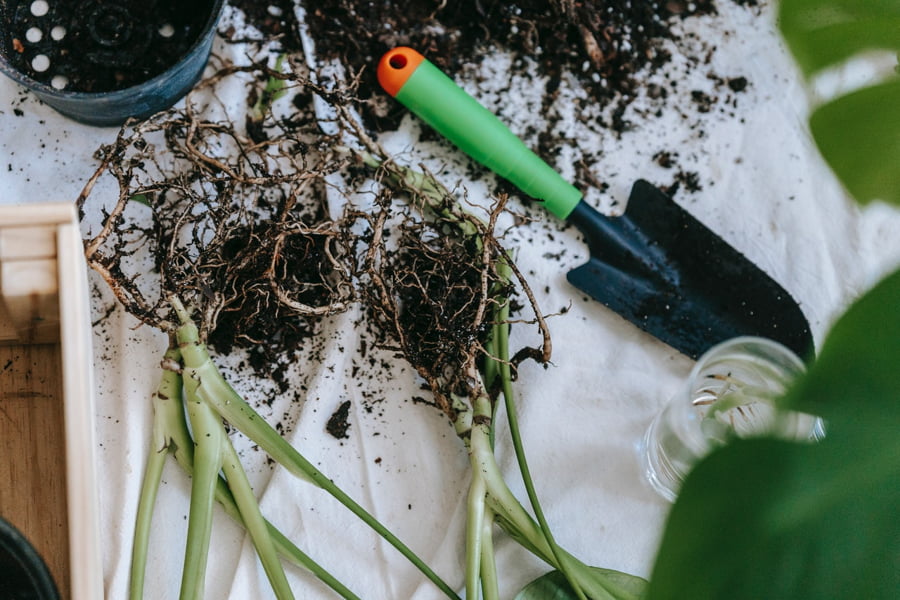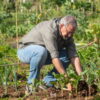After transplanting, the plant may be downcast, this may be because it is undergoing transplant shock.
Today in our blog we will talk about how to identify transplant shock, what its symptoms are, what it is, how to revive it after shock and tips to avoid it, you know that if you have any questions you can contact us here.
What is transplant shock?
The change of conditions to which a plant is subjected when moving to a new medium, can be a shock to it.
For example, moving from a humid environment with a controlled temperature, in a greenhouse, outside to a drier environment with sudden changes in temperature.
If it is not prevented or treated, it can cause our plant not to survive, which entails an economic and time cost.

Symptoms of transplant shock
As we have mentioned before, it may be that the plant is downcast after the transplant, and if it presents any of these symptoms, it is a shock.
They are symptoms of water stress, that is, due to lack of water, since they can take time to adapt to the environment and absorb water. This is due to the roots being out of place after the transplant for a while, so it must be rehydrated immediately.
The symptoms are:
- Reduced vigor of the plant.
- Stopping its growth.
- Wrinkled, rolled and yellowish leaves.
- Wilting and falling leaves.
- Reduced winter hardiness
- Premature fall color appearance.
Revive a plant that has undergone transplant shock
It is possible that this section interests you more than prevention itself, because it may be happening to you and that is why you have come to this entry on our blog.
In most cases there is a solution to transplant shock, and you have to focus on encouraging the roots to use their energy to spread and settle, instead of looking for nutrients.
To begin with, there can be two types of extreme conditions in the new environment, very high or very low temperatures:
High temperatures
If the temperatures are very high, try to place the plant in a place sheltered from heat and direct sunlight to avoid transplant shock.
If it is already transplanted into the ground, you can put an umbrella on it during a certain time of the day when the sun is strong, or place a white sheet on it that reflects the light and protects the plant.
Low temperatures
If, on the other hand, the temperatures are very low, try to place it inside a greenhouse, if you have one (if you want to know more about greenhouses, click here), or in an area where the temperature is not so extreme, such as inside a house .
If the plant is already in the ground, you can place a plastic bottle cut in half on top of it.

Importance of humidity
This part is essential for the development of the plant in a new environment and to avoid the shock of the transplant.
You must try to maintain a high humidity and frequency of irrigation at the beginning, and go lower as the days go by, so that the plant gets used to it. slowly.
Use products such as fertilizers that increase the vigor and resistance of the plant, that are rich in potassium, since this favors the absorption of water and reduces hydric stress.
How to prevent transplant shock
To avoid adverse situations, it is recommended that you follow the steps that we show you below:

Choose the best time
In warm months like summer, it is ideal to transplant during the coolest hours of the afternoon or taking advantage of a cloudy day, in this way, the plant will have all night to adapt to the new environment before being exposed to the heat of the day.
In addition, at night is when the plant has more metabolic activity and that is when it needs to absorb more water.
Prepare the ground well
Organize yourself well and order all the plants before moving them, if you are going to plant in the ground, do not forget to decompress well, add compost and water to avoid transplant shock.
If, on the other hand, you are going to put it in a container, make sure you have a good substrate at hand to provide the necessary nutrients to the plant.
Remember that the ground has to be very soft, nourished and moistened, you can use fertilizer.
Take special care with the roots
Try not to touch the roots at the time of transplanting, since, if they are damaged, the plants dedicate energy to repairing them instead of focusing their efforts on adapting to the new environment.
It is important to moisten the substrate of the seedbed, in addition to using biodegradable seedbeds so that they are transplanted next to the seedling, in this way the roots suffer less.
The environment is a factor to take into account
Once the transplant is carried out, the conditions of the new medium must be minimized, as mentioned above, so that its adaptation to the new medium is simple.
It is also important to protect it, apart from extreme temperatures, from the wind, since this increases the loss of water by leaves and the evaporation of the soil, factors that lead to transplant shock.
Keep moisture
As we have mentioned, try to maintain a high humidity and irrigation frequency at the beginning, and lower it as the days go by, so that the plant gradually gets used to it.
Worm humus to avoid transplant shock
At VermiOrganic we have worm humus for you, a little of this product around the roots and the plant, it reduces the risk of shock.

Resume
- Transplanting a plant is not an easy task and you must have the necessary instruments.
- Humidity and the use of products such as fertilizers can help you if you find yourself in this situation.
- Try to prevent it with the tips we have provided.
Do you want personalized advice?
At VermiOrganic we have contact with experienced groups of agronomists, legal advisers who can help you convert your farm into a sustainable and environmentally friendly crop, at the same time that we can make it more profitable and efficient.






